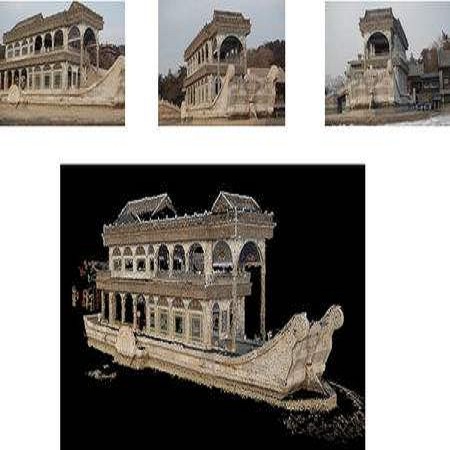Grasp detection in clutter requires the robot to reason about the 3D scene from incomplete and noisy perception. In this work, we draw insight that 3D reconstruction and grasp learning are two intimately connected tasks, both of which require a fine-grained understanding of local geometry details. We thus propose to utilize the synergies between grasp affordance and 3D reconstruction through multi-task learning of a shared representation. Our model takes advantage of deep implicit functions, a continuous and memory-efficient representation, to enable differentiable training of both tasks. We train the model on self-supervised grasp trials data in simulation. Evaluation is conducted on a clutter removal task, where the robot clears cluttered objects by grasping them one at a time. The experimental results in simulation and on the real robot have demonstrated that the use of implicit neural representations and joint learning of grasp affordance and 3D reconstruction have led to state-of-the-art grasping results. Our method outperforms baselines by over 10% in terms of grasp success rate. Additional results and videos can be found at https://sites.google.com/view/rpl-giga2021
翻译:杂乱的碎屑探测要求机器人从不完整和吵闹的感知中了解三维场景。 在这项工作中,我们洞察到,三维的重建和掌握学习是两个密切相关的任务,两者都需要对本地几何细节有细微的了解。 因此,我们提议通过多任务地学习共同代表制,利用握住花机与三维重建之间的协同作用。我们的模型利用深层隐含功能,持续和记忆效率代表制,以便能够对两个任务进行不同的培训。我们在模拟中对自我监督的掌握实验数据模型进行培训。评价是在一个拼凑的清除任务上进行的,机器人通过一次掌握它们来清除被包绕的物体。模拟和真正机器人的实验结果已经表明,使用隐含的神经表和共同学习握住花机和三维的重建已经导致了最先进的掌握结果。我们的方法在获取成功率方面比基准高出10%以上。在https://sitesite.gogle.com/rpligiga20中可以找到更多的结果和录像。




